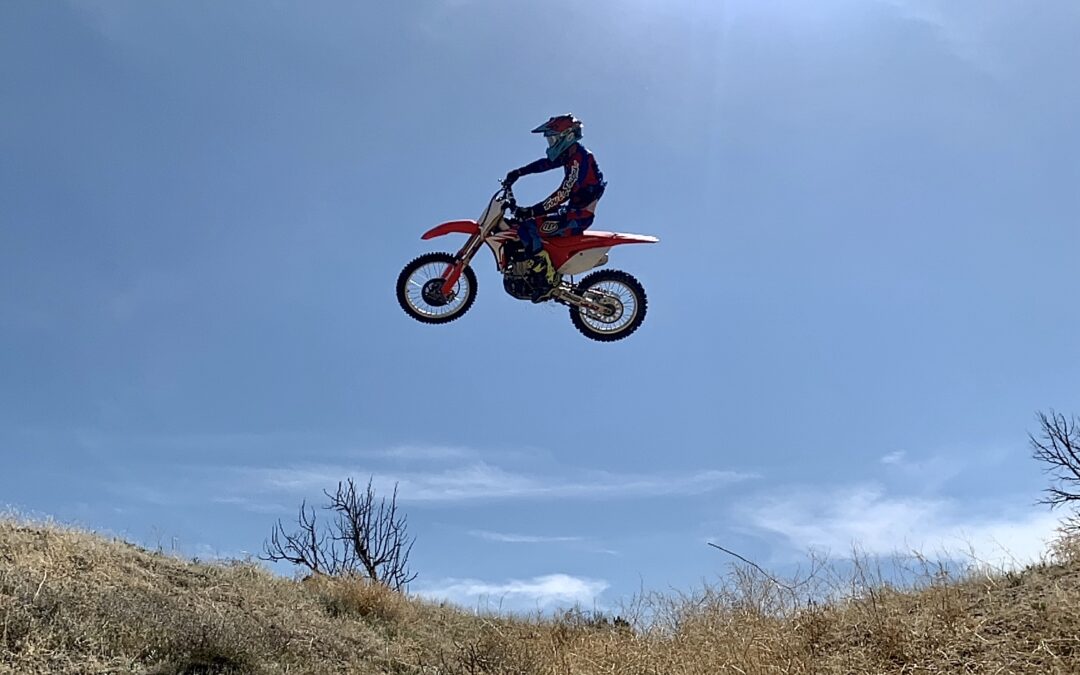How To Properly Jump a Dirt Bike Overview
Dirt bikes are fun to ride and tackle obstacles. In fact, most people buy them for fun and adventure. However, before you attempt to do any stunts on a dirt bike, ensure you know what you are doing. Jumping is undoubtedly the most thrilling thing you can do with a dirt bike. However, it’s advisable to learn the proper jumping technique on a dirt bike beforehand to avoid injury, damaging your bike, and other probable risks.
The information below will highlight all there is to know about dirt bike jumping skills. We’ve done extensive research and considered first-hand dirt bike experience. Here’s a step-by-step guide to follow from the preparation to actual jumping, landing, and maneuvering once you complete your jump.
Learn How to Jump a Dirt Bike in These Simple Steps
Table of Contents
Step 1: Take the Necessary Safety Precautions
This is an obvious but commonly overlooked step. Before you attempt riding a dirt bike, let alone jumping, make sure you have the right protective gear. Wear a proper full-face helmet, knee braces, and a chest protector. To prevent serious injuries, you should invest in full dirt bike riding gear that includes wrist protection, elbow protection, etc.
Step 2: Learn Proper Body Positioning
To jump safely and adequately, your body must be positioned a certain way. First and foremost, you must maintain a stable position. Your body shouldn’t be moving around as you jump and land. You should be standing with the footpegs supporting the middle of both feet firmly. Your knees should be bent slightly and hips positioned above the footpegs. What’s more, the upper body should be bending forward slightly to make a 45 degree angle in relation to the ground.
Your hands should also have a tight grip on the handlebars with elbows bent while sticking out slightly to the sides. Lastly, your head should be located over the handlebars. To maintain this position firmly, it is advisable to rest your knees firmly on the bike, especially when approaching a jump. This tip ensures your feet don’t get off position and fly off the bike’s pedals.
You need to master the correct body positioning to reduce injury risks. You are also bound to feel stable, relaxed, and in total control, if you maintain the proper body positioning.

Step 3: Learn Proper Dirt Bike Control (Acceleration, Gearing, etc.)
Besides learning body positioning, you also need to learn proper bike control as part of the proper jumping technique on a dirt bike. You should accelerate continuously and smoothly as you approach a jump.
This should be done while maintaining the desired speed and having a steady grip. Your bike can lose momentum and nose-dive if you release the throttle before the jump. Overspeeding is also discouraged as this can cause the bike to rotate upwards. Don’t go too fast unless you want to do a mid-air wheelie.
You should also maintain low gears. Generally, the third gear will work perfectly when approaching a jump since it maximizes bike responsiveness. You can shift during a jump to give your bike momentum. However, you shouldn’t clutch or gas the bike mid-air. You can gear downwards to decelerate the bike if you turn while jumping.
Step 4: Learn the Do’s and Don’ts of Safe Landing
There are some things you can do mid-air or while landing that can compromise your safety. For instance, you can accelerate to counter the pitch if you start pitching too far forward mid-air. Crash-landing on your dirt bike’s front wheel is dangerous. To avoid this, accelerate enough when you are on the ground just before taking off. It also helps to hold the throttle steadily throughout the jump.
When landing from a large jump, use your clutch. Most importantly, don’t stall the bike, or you risk losing complete control. What’s more, remember to release the back brake just before you land (if you use it to drop the front wheel mid-air) to avoid crashing. Over-acceleration usually causes back wheel landing.
Moving mid-air and positioning your body appropriately (crouching down on the bars) can balance out wheels before landing. You can also avoid a mid-air wheelie by leaning forward while tapping your rear brakes and pulling the clutch. What’s more, you should have your grip tightly on the bike as you land. Your knees should press on the bike firmly to keep your body stable and direct impact to the legs instead of other delicate parts of the body like the arms, wrists, and back.
When landing, focus on achieving a balance between the wheels (parallel to the ground) instead of landing entirely on one wheel. Most importantly, remember to accelerate slightly when landing to keep your dirt bike going in a straight line.
Step 5: Practice the Jump
It takes practice to perfect dirt bike jumping skills. You should ride slowly and go over bumps multiple times before attempting a jump. This step should be used to practice everything you have learned above. What’s more, some issues can only be discovered and perfected through practice. You’ll also be able to gain first-hand experience unique to your bike. Different dirt bikes behave differently based on multiple factors.
Riding over jumps slowly is a great way to perfect your approach, understand what to expect, and get comfortable with different speeds and bike control aspects. Ideally, start with small jumps that are a few feet tall (4 to 6). You should start attempting larger jumps only after you have perfected body positioning, bike control, and landing.
Summary: Learn How to Jump a Dirt Bike
There you go! The 5 steps above highlight the most important dirt bike jumping information for a safe and fun experience. While there are other tips and tricks on how to jump a dirt bike, following the above information to the letter is a great start. Most importantly, constant practice and perseverance is the most effective way of improving your dirt bike jumping skills. Getting the right dirt bike and dirt bike gear also helps.





